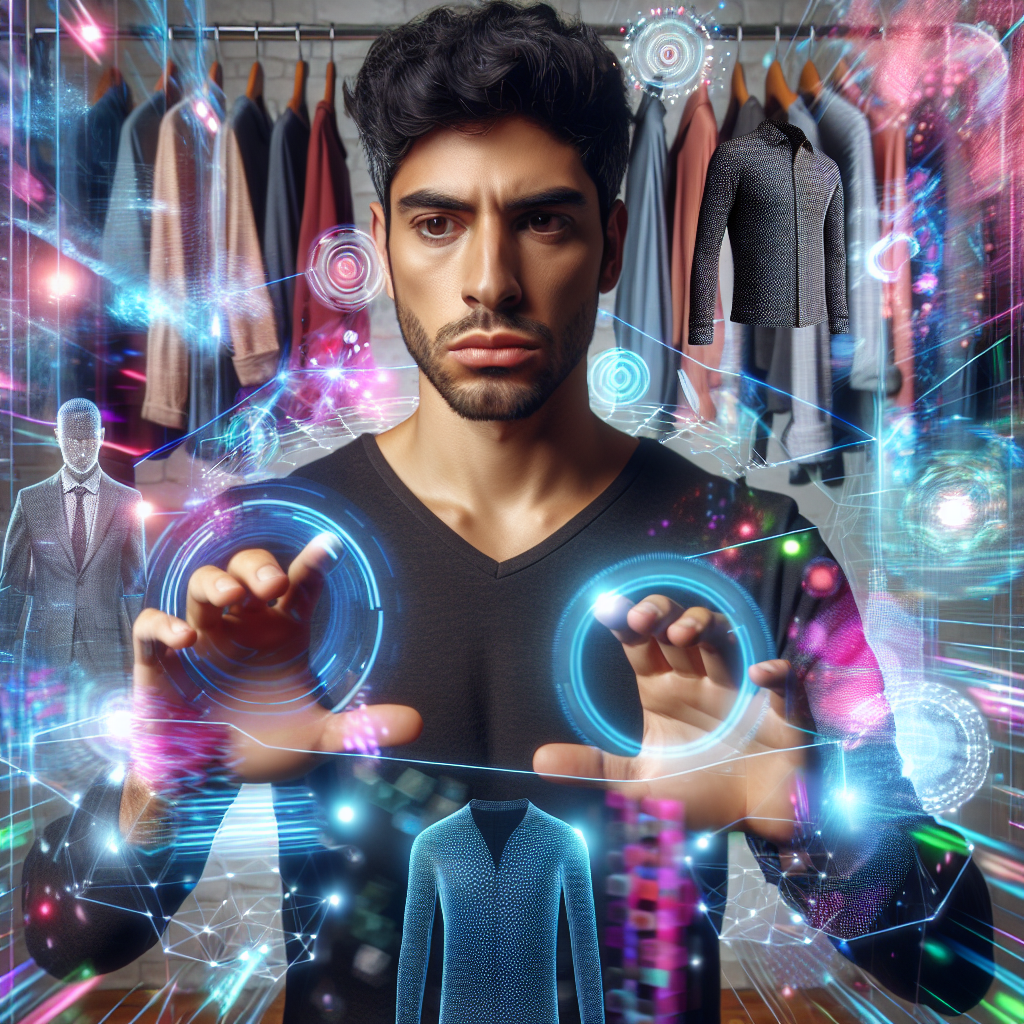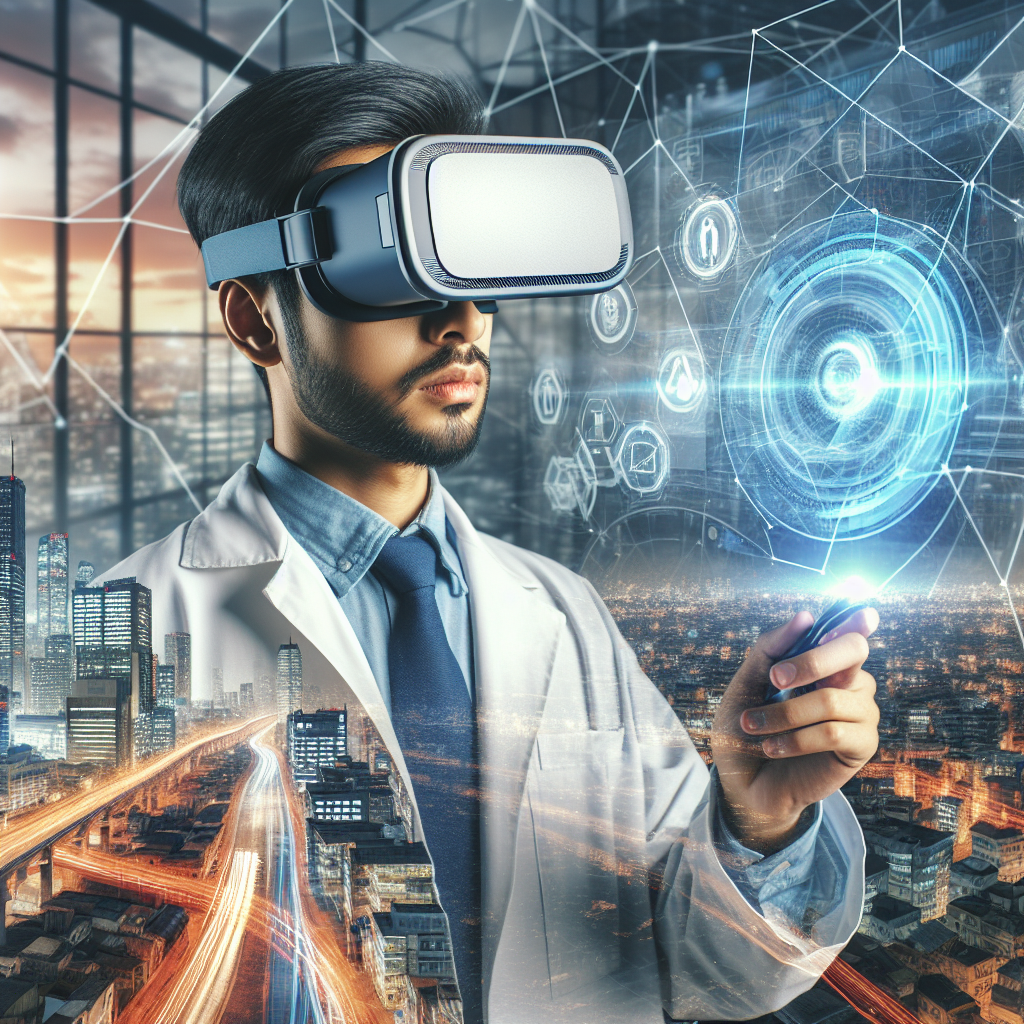
Have you ever wondered how Augmented Reality Marketing can transform the way you connect with your audience? ⭐ If youre a business owner looking for innovative ways to engage your customers, AR might just be the key you need to unlock new opportunities.
At its core, What is AR in marketing? is about blending the digital world with the real world. Imagine a potential customer pointing their smartphone at a product and instantly seeing a 3D model of it right in front of them! This is just one example of how augmented reality can capture attention and enhance consumer experiences. Brands like IKEA have already embraced augmented reality services to allow customers to visualize furniture in their homes before making a purchase. ⭐️⭐
AR generates immersive experiences that can drive engagement and conversion. Studies show that 70% of consumers would like to try AR while shopping. In addition, brands using AR in their marketing report up to a 27% increase in conversions! ⭐ So, if youre looking to stand out from the competition, integrating AR into your strategy could be a game-changer.
| Brand | AR Experience | Impact on Sales |
| IKEA | Virtual furniture placement | 27% increase |
| Sephora | Virtual makeup trials | 40% increase |
| L’Oreal | AR try-on experience | 30% increase |
| Pepsi | Interactive bus shelter | Boost in brand engagement |
| Adidas | AR shoe customization | Higher user retention |
| North Face | Outdoor AR experience | Support of community engagement |
| Ford | AR car showrooms | Enhanced decision-making |
| Dominos | Pizza customizations | Increased orders |
| Coca-Cola | AR cans | Increased shareability |
| Warby Parker | AR eyeglass fitting | Improved customer satisfaction |
So, how do you harness the power of augmented and virtual reality in marketing? Here are some tips: ✅
Let’s discuss a real success story. A clothing brand recently integrated AR into their marketing. Customers could scan displays in-store to see models wearing outfits in 3D. This led to a 25% increase in foot traffic and significant sales growth! ⭐ By providing an engaging in-store experience, they differentiated their brand and connected with their target audience.
You might be asking, “How can I implement this in my business?” That’s where we come in! With over 20 years of experience in marketing and promotions, our professional specialists are ready to help you develop a tailored AR marketing strategy that aligns with your goals. Whether you need a customized AR application or require technical support, we offer all services in one place, minimizing your point of contact.
Don’t let your competition leave you behind. Contact us today at +373 601 066 66 or visit our website webmaster.md to learn more about how we can elevate your marketing strategy with AR. With a guarantee of quality and professional support, we’re here to guide you every step of the way. ⭐

Are you ready to elevate your promotional game? ⭐ With the rise of Augmented Reality Marketing, there’s never been a better time to integrate AR into your marketing strategy. But how can you effectively harness this technology for successful promotions? Let’s dive in!
Imagine your customers being able to see a 3D version of your product right in their living room before they buy it! This is the power of AR. Brands like IKEA and Sephora have successfully implemented this by allowing users to visualize products in their own space or try on makeup virtually. This not only engages users but also increases the likelihood of conversion. According to studies, brands that use AR see up to a 40% increase in customer engagement. ⭐
Social media is a goldmine for AR marketing. Platforms like Snapchat and Instagram offer AR filters that let users interact with your brand in fun ways. For example, you can create filters that allow customers to try on glasses or see how a piece of furniture looks in their home. By promoting these filters, brands can drive user-generated content, sharing, and ultimately lead to increased sales. Did you know that 70% of consumers would prefer to shop at a brand that offers AR experiences? ⭐✨
Gamifying your marketing strategy with AR can also be highly effective. Create fun challenges or scavenger hunts where customers can earn rewards by finding specific products in-store or online. For instance, the McDonald’s Happy Meal app in collaboration with Pokémon GO attracted families to their restaurants. This gamified approach not only increases foot traffic but also strengthens brand loyalty. ⭐
Offering virtual reality tours of your store, showroom, or facilities can create immersive experiences for customers. This is particularly effective for real estate or car dealerships, where customers can take a detailed look at the property or car without leaving their homes. By providing an engaging way to explore your business, you create a strong emotional connection with potential clients. If they love the experience, they are more likely to visit in person! ⭐⭐
Incorporating AR elements in your email marketing campaigns can breathe life into your messages. Instead of just a static image, include an AR feature that allows recipients to use their cameras to see a model of your product. This adds an interactive element that can lead to higher open rates and conversions. Imagine receiving an email where you can see a new pair of shoes right in your living room before purchasing! ⭐⭐
By employing these strategies, you can effectively integrate augmented reality services into your marketing promotions. Remember, the key is to create memorable experiences that resonate with your audience. Need help with your AR marketing? Our team of experts at webmaster.md is here to assist you! With over 20 years of experience, we provide professional, comprehensive services tailored to meet your needs. Contact us at +373 601 066 66 or visit our website to discover how we can elevate your marketing strategy! ⭐

When it comes to Augmented Reality Marketing and Virtual Reality (VR), misconceptions abound. ⭐ Many people think they know what these technologies are about, but there are plenty of myths that cloud the real potential of AR and VR in marketing. Lets set the record straight!
One of the most common misconceptions is that AR and VR are interchangeable. While both technologies enhance user experience, they are fundamentally different. AR overlays digital elements onto the real world, while VR immerses you in a completely virtual environment. For example, IKEA’s AR app allows customers to visualize furniture in their homes, whereas VR might provide a fully immersive experience of exploring an imaginary world. Understanding this difference is key to strategizing your marketing efforts. ⭐⭐
Many people believe that only big companies can afford to implement AR and VR technology in their marketing. This is far from the truth! While initial costs can be significant, there are many affordable tools and platforms available that cater to small and medium-sized businesses. Startups can also benefit from leveraging these technologies to level the playing field and attract attention. For example, a small retail store can use AR to create a unique shopping experience, even without a massive budget! ⭐⭐⭐
Another myth is that customers are not interested in AR and VR experiences. In reality, studies show that about 70% of consumers would like to try AR before making a purchase. This new wave of consumer behavior indicates that interactive and immersive experiences are becoming crucial to customer satisfaction. Brands like Sephora leverage AR for virtual makeup try-ons, demonstrating that customers enjoy engaging with these technologies. ⭐✨
Some marketers shy away from AR and VR, believing that implementation is overly complicated. While developing a sophisticated AR or VR application may require technical expertise, there are numerous user-friendly platforms available that simplify the process. For instance, companies like Blippar and Zappar offer straightforward solutions for creating AR content without needing extensive programming knowledge. This means that businesses of all sizes can create engaging AR experiences without becoming tech experts. ⭐⭐
Another common misconception is that AR and VR are merely passing trends. However, research indicates that AR and VR markets will reach $300 billion by 2024. This growth alongside advancements in technology showcases that these tools are here to stay! Brands embracing AR and VR today are paving the way for future marketing practices, ensuring they remain competitive in the ever-evolving digital landscape. ⭐⭐
While creating entertaining experiences is an excellent use of AR, it’s not the only benefit. AR can also enhance customer education, provide detailed product information, and support decision-making. For example, automotive brands are using AR to showcase intricate details of their vehicles, helping customers make informed choices. This deepens the connection between brands and consumers, leading to better relationships and increased loyalty. ⭐❤️
Many people mistakenly think that VR is only relevant to the gaming industry. While gaming has indeed been a major driver of VR technology, businesses across diverse sectors are leveraging VR to create immersive marketing experiences that showcase their products or services. For example, real estate companies are offering virtual property tours to potential buyers, while tourism boards provide virtual experiences of destinations. ⭐⭐
By debunking these myths, organizations can better understand the immense potential of augmented reality services and VR in marketing. However, navigating this new landscape can be daunting. Thats where we come in! With over 20 years of experience, our team at webmaster.md can help you integrate AR and VR into your marketing strategy effectively. Contact us at +373 601 066 66 or visit our website to discover how we can elevate your brand through innovative solutions! ⭐

Are you ready to glimpse into the future of marketing? ⭐ With the rapid evolution of Augmented Reality Services, various industries are on the brink of a revolution. As technology continues to advance, AR is projected to transform the way brands engage with customers and promote their products. Let’s explore the exciting trends that are shaping the future of marketing and why you should be paying attention!
Personalization is becoming a critical aspect of successful marketing. As AR technology evolves, brands will enhance personalization by providing tailored experiences based on consumer preferences. Imagine a beauty brand enabling customers to virtually try on tailored makeup looks based on their skin tones and preferences. This level of customization fosters a deeper connection with the customer, leading to higher satisfaction and increased conversion rates. In fact, personalized experiences have been shown to increase engagement by up to 80%! ⭐️⭐
The integration of AR with e-commerce platforms is set to streamline the shopping experience. With advancements in mobile technology, consumers can visualize products in their spaces before purchasing right from their smartphones. For instance, customers may use AR to place furniture in their homes via an app before completing their online order. This convenience not only reduces returns but also enhances customer confidence in their purchasing decisions. E-commerce companies leveraging AR are likely to see sales growth as customers embrace this innovative shopping method. ⭐⭐
As both AR and VR continue to gain traction, the lines between virtual and augmented experiences are beginning to blur. We can expect to see an increase in hybrid experiences that combine elements of both technologies. Imagine consumers attending virtual product launches where they can interact with 3D holograms of products while immersing themselves in a virtual environment. This kind of interactive experience captures attention and gets people talking about your brand, enhancing word-of-mouth marketing. ⭐⭐
In a world where consumers are bombarded with advertisements, brands must find creative ways to stand out. AR enables immersive storytelling that can captivate audiences. For example, a travel agency could use AR to facilitate virtual tours of destinations, making customers feel as if they are actually exploring exotic locales before booking their trips. This form of storytelling not only grabs attention but also creates lasting memories, increasing brand recall and loyalty. ⭐✈️
Location-based AR marketing is another trend that is gaining momentum. This strategy utilizes GPS technology to trigger AR experiences right where consumers are. For instance, a restaurant could use AR to show potential customers the menu options available when they stand outside the venue. This not only engages passersby but entices them to step inside. As more businesses leverage this technology, location-based promotions will become commonplace, driving foot traffic and enhancing local marketing efforts. ⭐⭐
Gamification has proven to be an effective marketing strategy, and combining it with AR opens up exciting possibilities. Brands can create AR-enabled games or challenges that engage users while promoting their products. For example, a sports brand could develop an AR game where users find hidden products in their environment to earn discounts. This creates excitement and encourages interaction, making advertisements feel less intrusive and more enjoyable. Games also encourage social sharing, amplifying your brands reach. ⭐⭐
The integration of AI with AR services is set to revolutionize customer interactions. AI can analyze user data and preferences to create more meaningful and targeted AR experiences. Imagine a store where the AR system recognizes a returning customer and offers personalized recommendations based on their past purchases, enhancing the shopping experience. Combining AI and AR will help businesses deliver super-tailored experiences and improve customer satisfaction. ⭐⭐
The future looks incredibly promising for augmented reality services in marketing and promotions. As technology continues to develop, the opportunities for brands to engage with customers in innovative ways are endless. Want to be at the forefront of this revolution? Our experienced team at webmaster.md is here to help you navigate this exciting landscape and implement AR solutions tailored to your business needs. Contact us at +373 601 066 66 or visit our website to explore how we can assist you on this journey! ⭐✨
Leaders in the IT market |
| 14+ years of experience and innovative solutions to help your business stand out and grow. |
Inspiring portfolio |
| 150+ successful projects: from sleek landing pages to complex corporate systems. |
Team of experts |
| 51+ professionals who bring your ideas to life with maximum efficiency. |

| NOTORIUM TRADEMARK AWARDS |
| Notorium Trophy 2017, Notorium Gold Medal 2018, Notorium Gold Medal 2019 |

| TRADE MARK OF THE YEAR |
| Gold Medal 2016, Gold Medal 2017, Gold Medal 2018, Gold Medal 2019 |

| THE BEST EMPLOYER OF THE YEAR |
| According to the annual Survey conducted by AXA Management Consulting - 2017, 2018, 2019 |